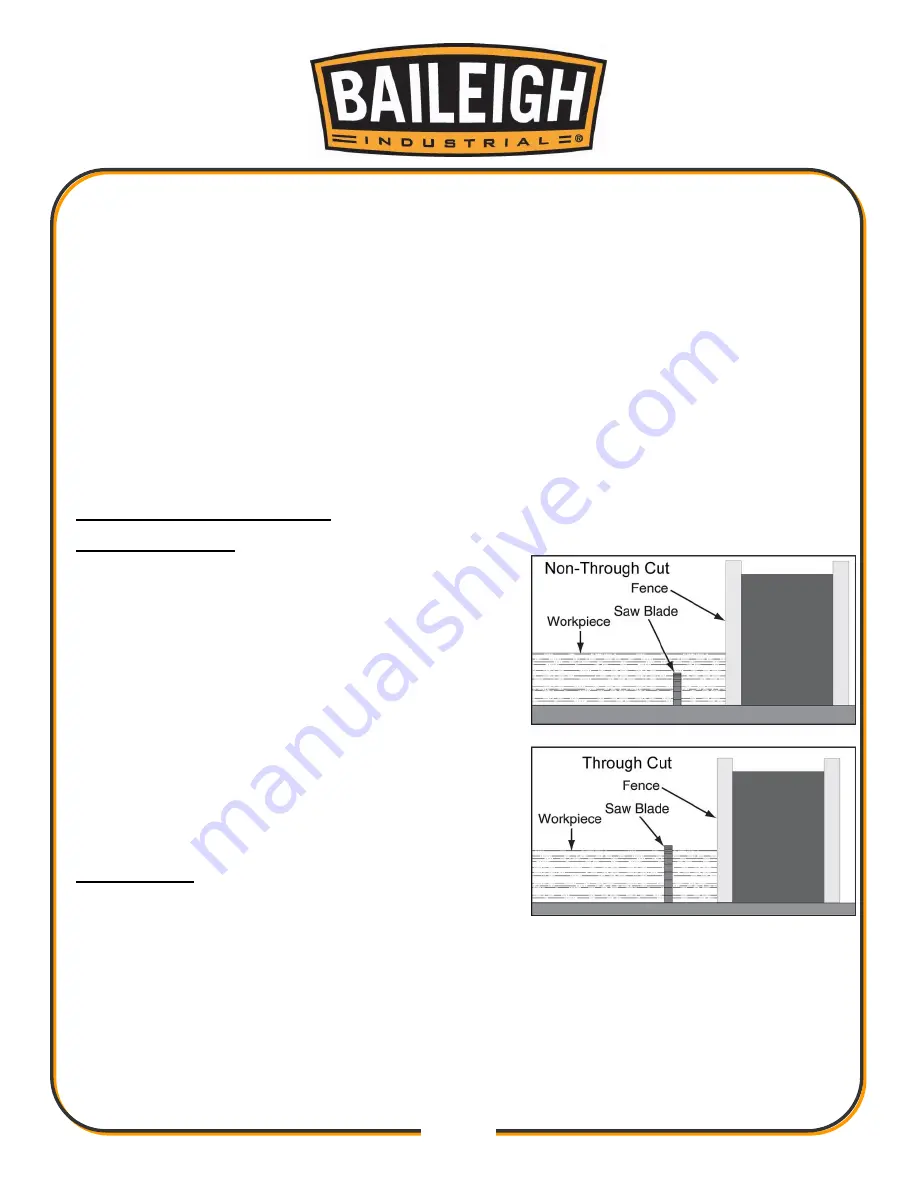
30
30
4. Adjusts the fence to the desired width of cut then locks it in place.
5. Checks the outfeed side of the machine for proper support and to make sure the workpiece
can safely pass all the way through the blade without interference.
6. Puts on safety glasses and a respirator.
7. Locates push sticks/blocks if needed.
8. Starts the saw.
9. Feeds the workpiece all the way through the blade while maintaining firm pressure on the
workpiece against the table and fence, and keeping hands and fingers out of the blade path
and away from the blade.
10. Stops the machine immediately after the cut is complete.
Non-Through & Through Cuts
Non-Through Cuts
A non-through cut is a sawing operation where the
blade does not protrude above the top face of the wood
stock, as shown.
Examples of non-through cuts include dadoes and
rabbets. Non-through cuts have a higher risk of injury
from kickback because the blade guard must be
removed. However, the riving knife MUST be installed
because it still provides some protection. When making
non-through cuts with a dado blade, do not attempt to
cut the full depth in one pass. Instead, take multiple
light passes to reduce the load on the blade. A dado
blade smaller than 10" will require removal of the riving
knife, because the riving knife will be higher than the
blade.
Through Cuts
A through cut is a sawing operation in which the
workpiece is completely sawn through, as shown in the
Figure below. Examples of through cuts are rip cuts, cross cuts, miter cuts, and beveled cuts.
The blade guard assembly MUST be used when performing through cuts.
Содержание TS-1040C
Страница 70: ...67 67 SAW BODY PARTS DIAGRAM...
Страница 71: ...68 68 SAW STAND PARTS DIAGRAM...
Страница 72: ...69 69 SAW TABLE PARTS DIAGRAM...
Страница 73: ...70 70 SAW TOOLS PARTS DIAGRAM...
Страница 81: ...78 78 NOTES...
Страница 82: ...79 79 NOTES...
Страница 83: ...80 80 NOTES...






























